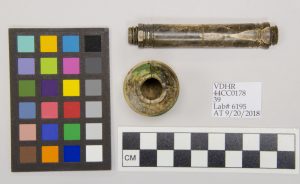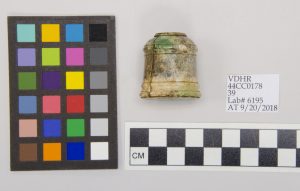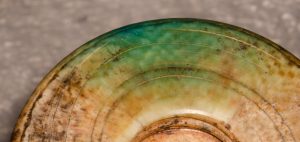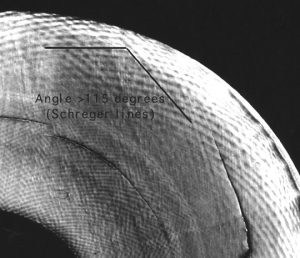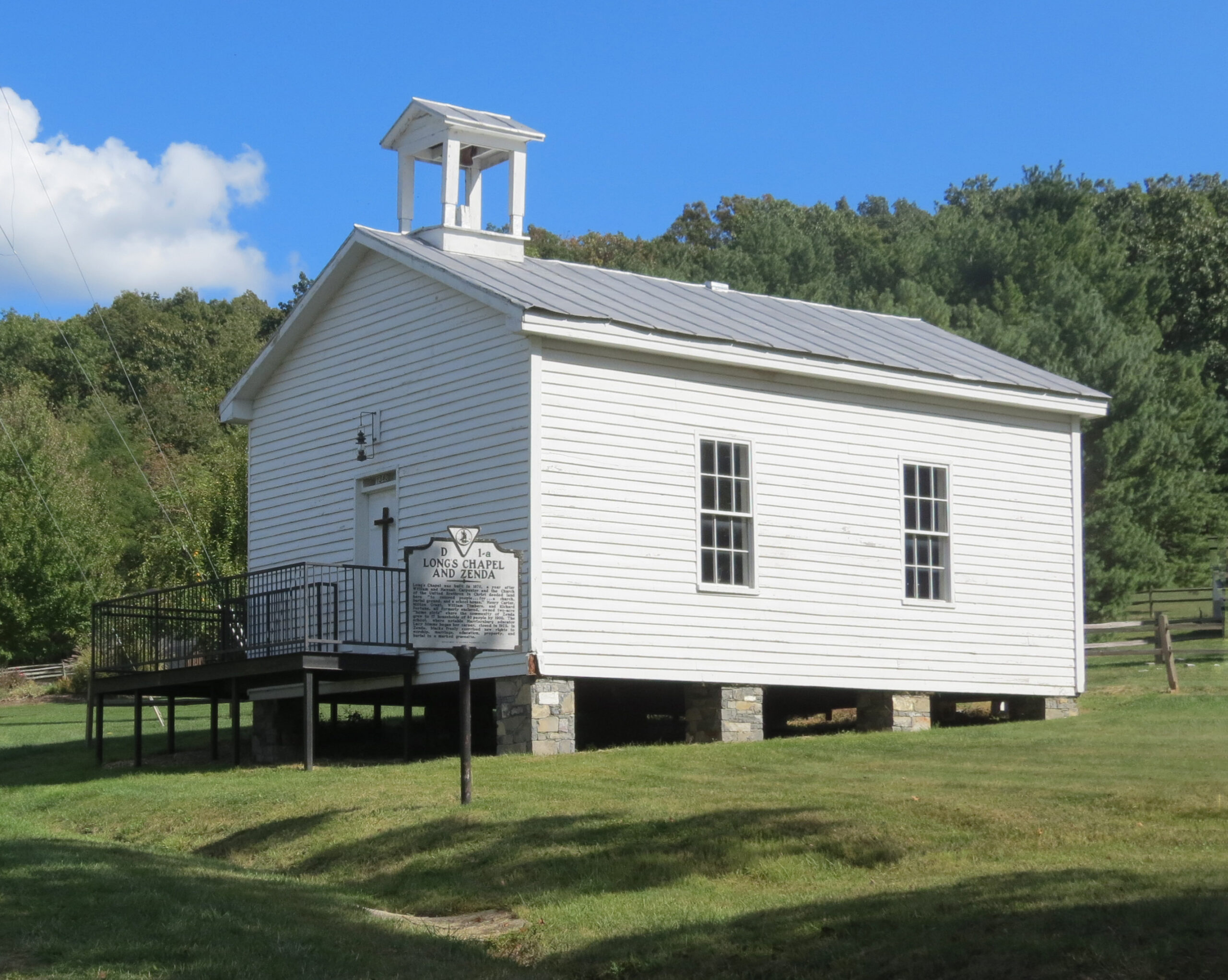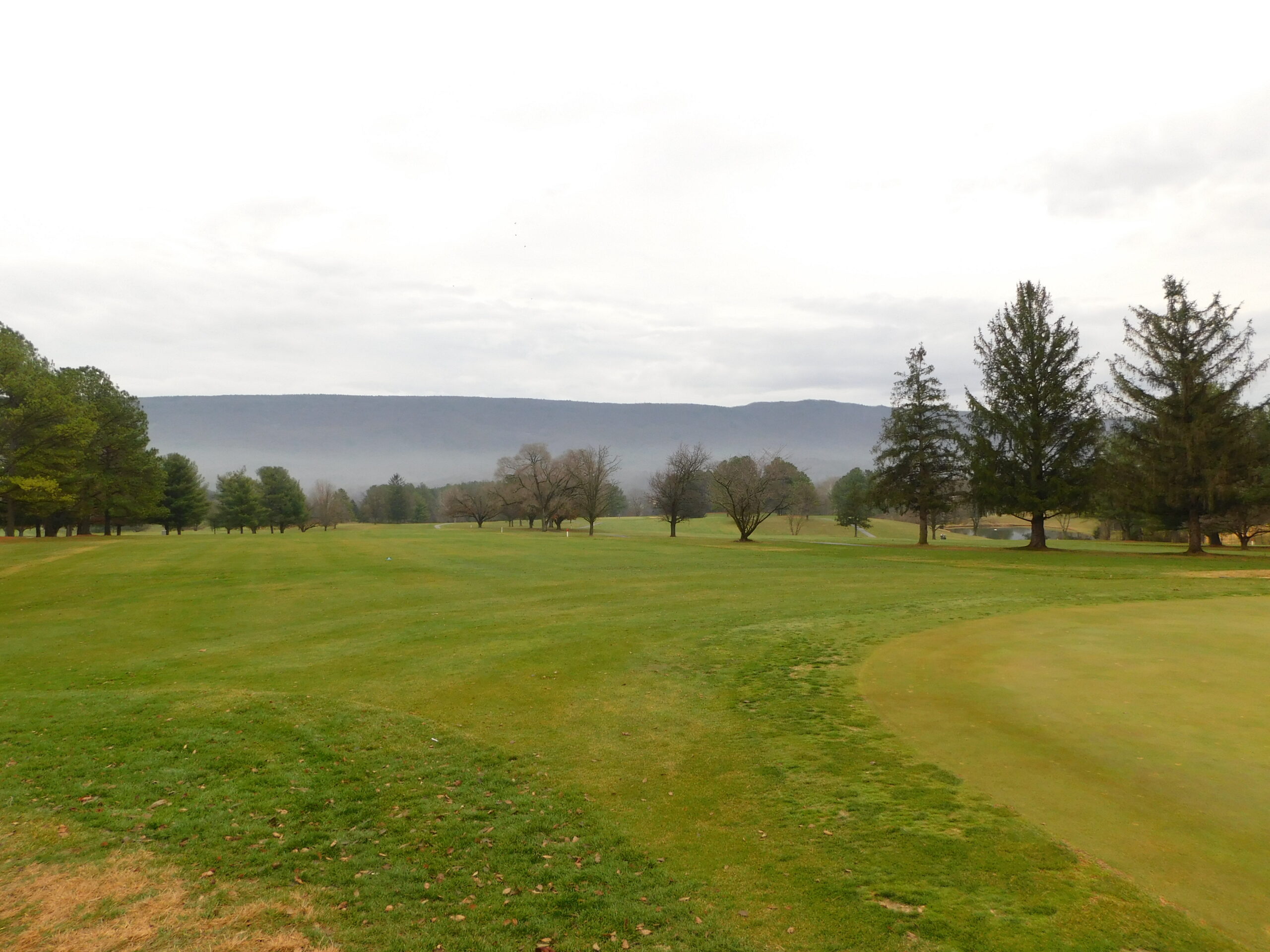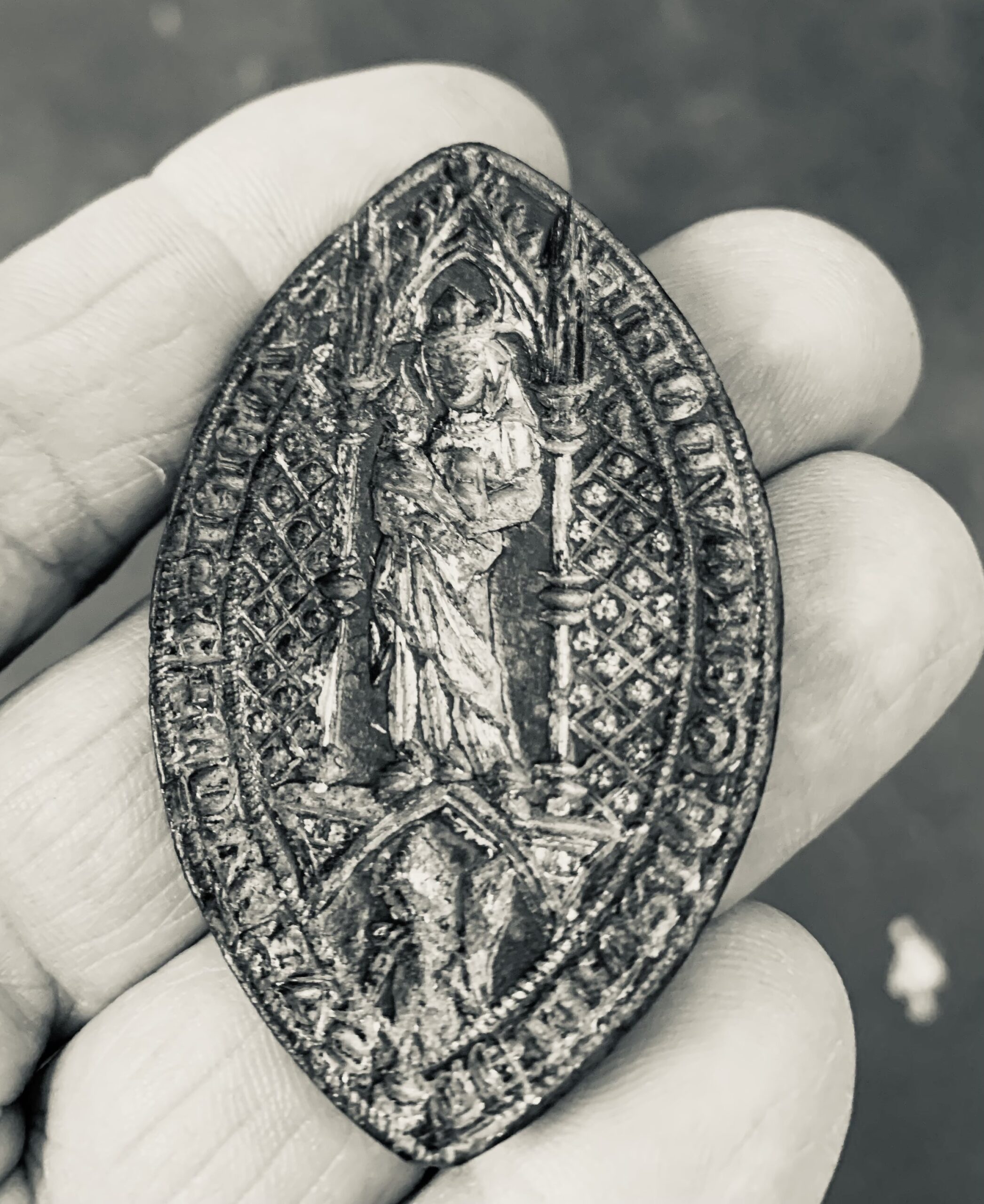Spotlight on DHR Collections: Tenacity: Women in Jamestown and Early Virginia
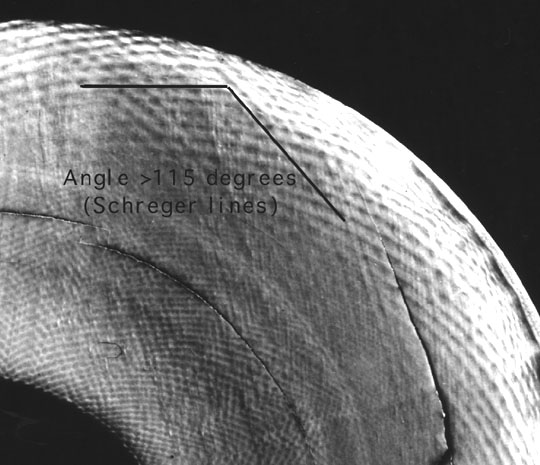
A Needle Case & Schreger Lines
One of the things that conservators are experts at is figuring out what an artifact is made from.
Recently an artifact arrived at the DHR Conservation Lab to be prepared for loan for an exhibition. The item, a needle case—also known as a hussif*—consists of two parts. It has a base, similar in appearance to an inkwell, and a hollow tube that screws into the base. A lady could store her needles in the case and carry it around with her to do her sewing.
Dating to the early 1600s and recovered from a site called Causeys Care (44CC0178) in Charles City County, the needle case helps tell the story of women in early Virginia, and it is now on display at Jamestown Settlement Museum, along with other DHR artifacts, as a part of the exhibit Tenacity: Women in Jamestown and Early Virginia.
Previously, the needle case was identified as being made of bone. Something about the cracks and the smoothness of the surface, however, made me think that this identification wasn’t quite right. Then, while examining an area of green staining caused by copper corrosion on the base, I saw them—Schreger lines! They can be hard to see in artifacts that have been recovered archaeologically, but the copper staining on the base helped to accentuate them.
Typically Schreger lines appear as cross-hatches and they form as the tusk of an elephant (or other tusked animal) grows. They can be seen in the cross section of a tusk when it is cut. The lines confirmed the needle case was fabricated from ivory.
This discovery by way of the Schreger lines that the sewing case is made of ivory will help archaeologists, curators, and historians make a more informed interpretation of this artifact. Frequently what something is made from can tell us about historic trade routes and the socio-economic status of the people who lived at a site. A more modern concern is the current laws covering transportation of ivory. Due to the poaching of elephants, strict rules are in place for how items made of ivory can be moved across national and international lines. With this new information confirming the artifact is made from ivory, many issues for international travel will have to be addressed before the object could safely depart the United States.
*According to Wiktionary hussif is from Middle English huswif (“housewife”), equivalent to house + wife.
Learn more about identification of different kinds of ivory: https://www.fws.gov/lab/ivory_natural.php
Learn more about Schreger lines: https://en.wikipedia.org/wiki/Schreger_line
Visit the Tenacity Exhibit: https://www.historyisfun.org/tenacity/
Learn more about travel with ivory artifacts: https://www.fws.gov/international/travel-and-trade/ivory-ban-questions-and-answers.html
--Katherine Ridgway, DHR Conservator
